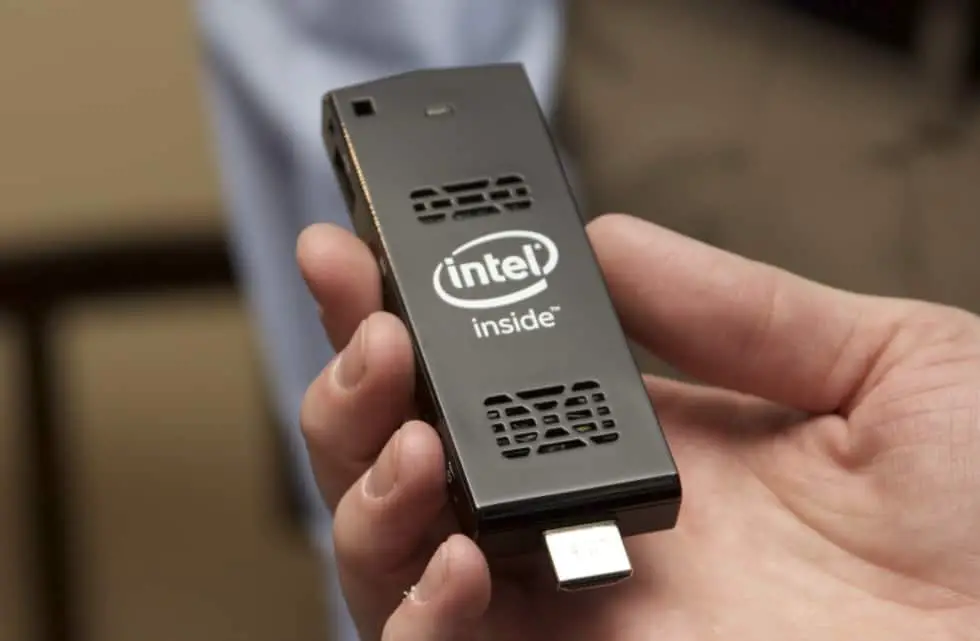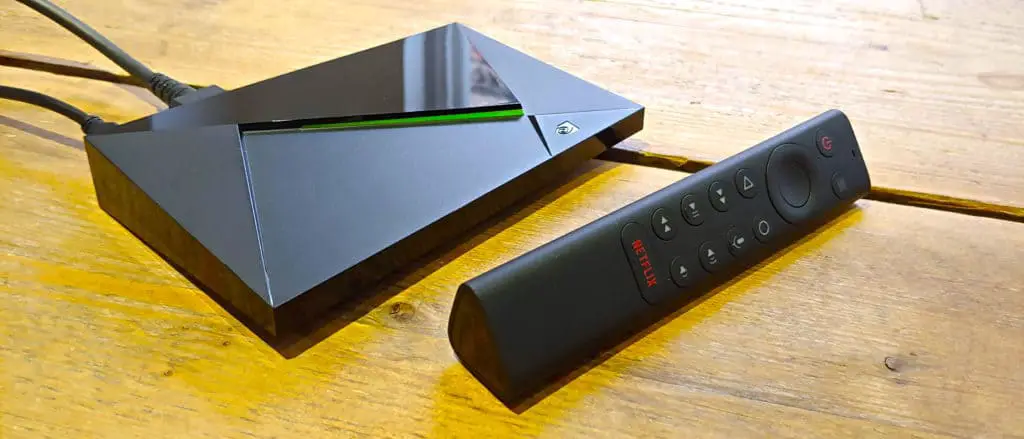This post contains affiliate links.
Having a digital sign can be a game-changer for all sorts of businesses. Supporting everything from Kiosks to the massive displays in Time's Square, tiny digital signage hardware is powering those screens. However, choosing what device is perfect for your operation can be difficult due to the plethora of hardware available on the market today.
The most readily used traditional hardware are those that support Windows PC applications. But, the small Firestick and the varied Chrome TV are also finding their place in digital signage. For those who are crafty with their coding and computer building, there is the option of building your system on a Raspberry Pi.
Not every piece of hardware will fulfill the need you have, and with so many options, the process of research can be daunting. Breaking down the machines by type and operating system, this guide is here to clear up the fog and demystify what every kind of hardware is doing and what sorts of business would benefit most from them. If you’re struggling to navigate the choices of digital signage player hardware, keep reading.
Windows Or LINUX, PC Based Hardware
Playing host to the most considerable amount of possible hardware products are those that have been optimized to work specifically with Windows and it's PC applications.
As you can directly connect these to a PC, mouse, keyboard, or just via the internet, they are multifunctional. Many can be integrated into a single, more extensive network of signs.
The PC on A Stick
- They are used primarily for a single screen.
- Easy to plug and play.
- Many models do not have a method of cooling, such as a fan or vents.

The PC on a stick resembles a Fire Stick or even a USB drive for some of them as they are just a small PC often running the Windows OS. Some can connect to WIFI, while others can be directly integrated via an ethernet cable.
This model is best suited for smaller businesses or single screens/kiosks. As they lack a cooling method, using a PC on a stick to run something larger or more complex than a single display would most likely result in a hardware failure.
INTEL Computer Stick
Running with an INTEL Atom processor, the Compute Stick is a powerful, pocket-sized computer with a low price point. The machine is benefited by having an onboard fan and multiple different sizes.
For smaller projects, there is a 4GB RAM 64GB Hard Disk version or a much more robust 8GB RAM 164 GB Hard Disk for more extensive cases.
Azulle Access PC Stick
Sporting a lower price tag than most, this fanless model is heftier than most others but does allow for Dual Band WiFi and ethernet connection. This model is perfect for older displays as it has multiple functionalities and can easily slip right into an HDMI port.
While not 4k like INTEL's products, it does accomplish the job and is a middle of the road piece of hardware in terms of both price and performance. It is available only with 4GB of RAM but does have expandable memory for more power or storage.
Mini or Micro PC
Similar in size to a small modem, the Mini PC is an excellent alternative for use with 3-5 monitors connected to a single system. Many mini-computers can serve a single kiosk with more efficiency than most devices or run several self-service check-out machines at a single time.
INTEL NUC
Directly from the INTEL store, the pre-built NUC devices can offer high capacity storage and processing. INTEL brings a premium level of performance and is one of the highest-rated brands on the market.
This premium does come at an increased price, with many of the premade models pricing at over $600. If you are more familiar with building your PC, they do have considerably lower priced kits that allow for flexible parts depending upon your needs.
XOGO MINI
At only $100, it is the cheapest mini-computer that still functions reasonably well for digital signage. With only 2GB RAM and a 16GB HDD and only being able to output at 1080p, it has some severe limitations. For simple functions and easy to plug and use design, it is perfect for single displays.
ACEPC
In the middle, in terms of price, ACEPC and its wide selection of models available for you to browse.
- INTEL CELERON 6GB DDR3 120GB SSD: The leading mini PC for use with up to two outputs. The SSD makes program loading times significantly faster. Outputting in 4k, this small device is potent in terms of power and performance.
- Fanless Mini PC Windows 10 Pro, Mini Computer Intel Core i5-5257U 8GB RAM/128GB mSATA SSD: This model is a step up from most other Mini PC's offering up to four outputs in 4k and tons of power for such a small machine. It may suffer from overheating as the fanless model can struggle in a hot environment.
Commercial Media Device
The largest and most highly functional form of digital signage devices, the Commercial Media Device, represents a category of hardware intended for large signs or complex systems.
Seneca XK-1.3 Media Player
Built by ARROW, the Seneca line is the thinnest machine on the market that offers full PC quality support.
Armed with memory expansions up to 32GB, it can handle any project, large or small. The product is custom-built to your needs and can range in price from 800$ to over 2000$ depend upon the amount of memory and features you need.
BrightSign
With the company playing host to several moderately priced media devices, BrightSign's standout is the XT line. With easy plug and use features, it is a functional piece of equipment the retails for $650.
Using a Power Over Ethernet connection is eliminates the need for a power cable. While not easily customizable, you can increase the memory via SD slots allowing for expanded capacity and futureproofing.
Signage on Chip (SOC)
Pioneered by tech giant Samsung, the Signage on Chip model is a relatively new display hardware brand for large projects and commercial use. Bucking the trend of combining a media player with a screen, the SOC is fully integrated within the display.
This integration comes with a relatively easy install process but requires proprietary software to use along with somewhat limited functionality. Currently, Samsung's SOC offerings are the most capable, with LG beginning development on their software to support third-party devices.
Standard SOC Displays
Ranging in size from 32″ to 55″, the standalone SOC displays can be a great addition to any business, large or small. Moderately priced, not much more than standard television, these displays come ready to go for static images and videos alike.
The Interactive Displays are a fair bit more expensive but bring with them touchscreen capability. One notable interactive SOC screen is the Flip2, a digital whiteboard and flipbook that allows for a mess and marker-free display.
LG Digital Displays
For commercial use, LG has several displays and a Micro LED system similar to Samsung's Wall. While they do not offer personal use systems beyond custom projects, their commercial offerings are immense. The price will vary depending upon need and goes from 1000$+. With their technology being proprietary, you must contact them for quotes and custom figures.
The Wall
The pinnacle of SOC technology, the Wall, is a micro-LED screens system installed to represent a single massive screen. Samsung keeps the price to themselves; however, a 150″ wall set up is estimated to be in the neighborhood of 20,000$.
This incredible price tag comes with the feature of the 4K powered screens being modular and with the ability to be installed in nearly any pattern or shape you could desire.
Android Based Hardware

Hardware that powers an Android system is similar to the Windows and other PC systems but is a bit less reliable and easy to integrate.
Despite its limitations, using an Android centric system can be a much cheaper option while still delivering the same playback consistency and power compared to devices purpose-built for digital display. These systems are typically marketed to a small business or for individual use.
- NVIDIA SHIELD TV: While not powerful, it still has an NVIDIA® Tegra® X1+ processor and 2GB RAM. The NVIDIA SHIELD makes for a capable streaming device. While it may not be useful for interactive displays, it can provide a stable video or image for your signage. For only 150$ and with the capability to output 4k, it makes for an excellent single installation.
- NVIDIA SHIELD TV PRO: Boasting 3GB RAM and the same NVIDIA® Tegra® X1+ processor as its smaller brother, the PRO, has a few upgrades beyond the expanded memory. With two USB ports for external memory or peripheral expansion.
- Orion Images: Relatively new in the world of digital signage, Orion offers products similar to Samsung's Wall and other SOC displays. Running Android OS natively, they are easy to integrate with preexisting Android apps.
- MINIX10: MINIX is the perfect example of a light and easy to use Android media device manufacturer. Outputting up to 4k and with 2GB DDR3 Memory, the X10 can handle pretty much any job you can throw at it. MINIX has a wide range of other media devices, with the X10 being their premier product.
Chrome OS Media Devices
For those familiar with the Google App store and make use of Chrome store applications, the Chrome OS often makes for an easy transition. Supporting all of Google's applications from the outset, these Chrome OS devices are a bit more expensive than Android but often bring a higher reliability level.
Google has blazed the trail for cloud-based services making their OS easy to integrate for digital signage from the cloud. These machines allow for simple set up and integration with the internet for broader functionality.
Asus Chromebit CS-10 Stick PC
Similar in profile to the flash drive look of the Windows PC on a Stick, the ASUS Chromebit is a powerful little Chrome OS plug and use PC. While it is WiFi only, the small device is capable in terms of processing with 2GB RAM and a decent quad-core processor.
While not revolutionary, it is a handy device for single displays and personal use. With only 16GB of flash memory on board, you may need to take advantage of Google's cloud services in order to beef up your storage if need be.
ACER CHROMEBOX
Small and easy to mount, the Chrombox keeps the modem style look of most other miniature PCs. The most simple Chrome OS device, the Chromebox, is intended to be installed with nearly endless flexibility. Lightweight and with a small profile, it is a great central unit, and with its four core processors and 8GB memory, it can manage nearly all small-scale signage operations.
AOPEN C-Tile 22
Mountable and with an optional stand, the AOPEN C-Tile is an innovative Chrome powered touchscreen tablet. With a 22″ screen, 16GB of flash memory, and dual-band WiFi connectivity, it is an excellent option for any self-service kiosk. The small SOC device presents itself as ticketing, check-in, or check-out solution.
Amazon Fire Stick
The lest expensive digital signage hardware option, at only 40$, the Fire Stick is the essential device for a small scale operation or individual terminal. While it is incredibly limited in its functionality, the Fire Stick makes for a more than competent 4K streaming platform. The newest model has now been outfitted with 16GB of storage and 4GB of RAM.
Standing up to most small thumb drive sized PCs, the Fire Stick does lack some essential functionality. If you intend to have any custom animation, customer interaction, or ethernet connectivity, you will find Amazon's streaming device does not compete.
So long as the content is limited to the small library of Amazon's supported apps, then it will work; otherwise, you should seek out something more purpose-built.
Raspberry Pi
The hobbyist's dream tool, the Raspberry Pi, is a powerful little device that can connect to just about anything with a screen. This option is not for everyone, and only those who have experience with building such a device can really hope to get the most out of it.
Fully customizable, you can practically build your Raspberry Pi for signage in any way you see fit. This customizability does come with the drawback of having to put all of the components together and have some computer know-how. If you have the knowledgebase and patience, then a Raspberry Pi can easily be the cheapest option for high-quality media control.
Be wary of purchasing a premade device as they are not supported, and if something breaks, you will not have a warranty or tech support to fall back onto. Additionally, the Raspberry Pi cannot support multiple screens, despite numerous sites claiming that they can. Only through additional peripherals and computers is such a thing possible.
How To Choose The Best Hardware For You
When deciding which product would be best for you, there are a few questions to ask yourself.
- What programs you will be running with your digital signage player hardware?
- What size digital signage player hardware do you need?
- What is the profile/form factor you want/need?
Sleek and straightforward, nearly unnoticeable when plugged in, the PC on a Stick and other flash drive shaped devices can deliver a small profile. While all of them require an external power source, their performance and offerings are as slim as they are.
Stick style hardware is suitable for:
- Single Applications
- Slideshows supported apps, video streaming.
- Individual screens
The Mini PC is the former standard for digital signage and controls several of the most intricate and well-designed platforms. As PC operating systems used to dominate, the Chrome OS, Android, and others are becoming used more frequently.
Many of these Mini PCs find themselves connected to a more significant network creating a system more considerable than the individual display.
If you consider something a bit more complicated or want your system to run buttery smooth, a commercial-grade media machine is the answer. Armed with the most considerable amount of functionality, connectivity, and power, the media machines drive some of the world's largest displays.
Finally, for custom jobs or in order to better integrate your system, you can consider the Signage on Chip model. While this tends to be the most expensive, it is also the most futuristic of all digital signage forms. Bleeding on the cutting edge SOC systems can be game-changers and offer unique traits with which the others cannot compete.
Concluding Remarks
From a humble family-owned storefront menu display to that of the massive LCD monitors of football stadiums, all digital signs have some sort of hardware working behind the scenes.
There is no single answer on which type is better and is left up to your own personal preference and business need. Due to advancements in technology and touch software, signs have become even more integrated into our society than ever before.


